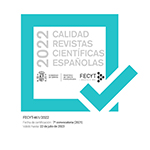The Double-Headed Eagle, Richard of Cornwall, and Grain from Almaine: Reconfigurations of Rulership during the Famine of 1256–58 in the Wake of the Samalas Eruption
Résumé
The environmental crisis following the eruption of the Samalas volcano in the mid-1250s led to a massive dearth of grain and severe famine crisis across Europe from 1256 onwards. English chroniclers and other contemporaries commented extensively on these effects at the time, and Richard of Cornwall responded to the famine in 1258 by organizing grain shipments. Although there are few instances of monarchs intervening at this scale on behalf of broad sections of the population in the thirteenth century, scholars have largely ignored Richard’s attempts to alleviate the famine. The article suggests that it was his close contacts with merchants from Lübeck that enabled him to access such ressources, while the grain imports were a key element in the emerging trade with Baltic producers for English grain provisioning. The ruler’s approach can probably best be explained by his kinship ties to Henry III, his English estates and his own experiences in the Mediterranean region. In this context we also find the first representation of the double-headed eagle coat of arms on profane objects in use for bulk goods like grain, adding a heraldic layer to an extraordinary monarchical relief measure.











